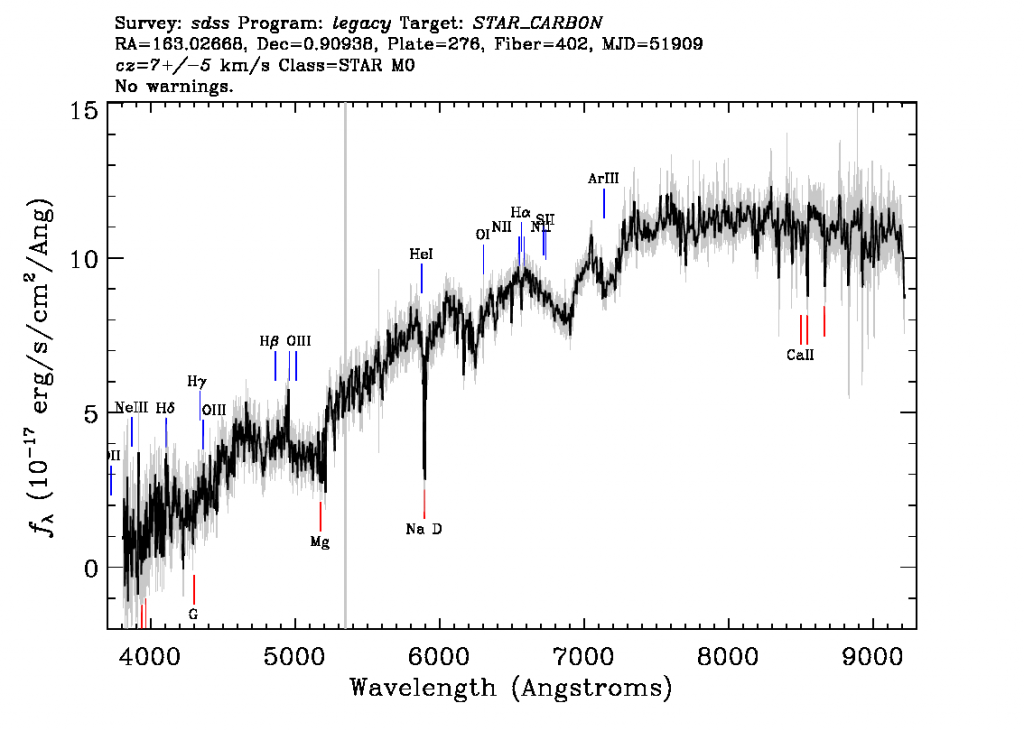The spectral types you have used, OBAFGKM, were developed in the early 20th century. In the last ten years, a new generation of telescopes has been built. These telescopes include the Hubble Space Telescope, the giant Keck Telescopes in Hawaii, Gemini North and Gemini South, the Very Large Telescope in Chile, the Subaru Telescope, and several others. There has also been a dramatic increase in the sensitivity of the CCD cameras used on these telescopes. These advances have allowed astronomers to discover new types of stars that do not fit into any of the traditional spectral types.
Type C stars, or carbon stars, are unusually rich in carbon. They have a beautiful, deep red color when viewed through a telescope. They appear red because a variety of carbon compounds on their surface absorb most of their blue light. The image below shows the spectrum of a type C star found by the SDSS.

Type L and type T stars are cooler, smaller, and dimmer than type M stars. They are usually very faint and difficult to find, and it’s difficult to obtain spectra from them.
Type W stars, also known as Wolf-Rayet stars, are as hot as the type O stars, but they have strong emission lines due to clouds of gas surrounding the star.
Type S stars are very rare. They are similar to type M stars except with zirconium oxide and lanthanum oxide instead of titanium oxide.
Most stars you observe will have one of the traditional spectral types. However, you may occasionally run across one of the unusual types listed here. Every star’s spectrum is unique, much like a human fingerprint. When a star is close to the boundary between two types, it can be difficult to classify by simply looking at the spectrum.
Exercise 8. Use the Object Explorer to examine Plate 282/51658, Fiber 345. This star is a class C carbon star. What spectral lines are present? Are the spectral lines present that you cannot identify from the charts given earlier?
Exercise 9. Repeat Exercise 5 for Plate 282/51658, Fiber 370. This is a sub-dwarf star. What is its spectral type (if you can classify it)?
Exercise 10. Look at the stars below. These stars have interesting spectra that are difficult to classify. As you can see, not every star fits neatly into our classification system!
What absorption lines are present? Do they fit into one of our classifications? If not, what is different about them? (Thanks to Mark SubbaRao)
